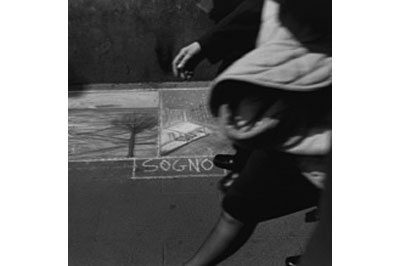Scenes from an Exhibition
[slider_pro id=”37″]
Last night the herd ran to the art fairs, but the quality in New York City’s Latin art world was up on East 57th Street at the opening of Graciela Iturbide (Mexico City, 1942) at Throckmorton Fine Art. The 71 year-old Iturbide, a world-renowned artist, is the protege of the father of Latin American photography Manuel Álvarez Bravo. Since his passing in 2002, she has carried the torch of the most revered interpreter of the Mexican spirit. Michael Brand, Director at the J. Paul Getty Museum has called Iturbide, “The heir to all that is best about the tradition of subjective photography in Mexico.”
There was a tender moment early in the evening when a gray-bearded fellow approached Iturbide. He was just another gallery visitor, but when he spoke recognition flashed across Graciela’s face, brought forth a warm embrace and the word, “Maestro.” The fellow was photographer Larry Siegel, Graciela’s first photography teacher. Siegel had been hired to document the preparations for the 1968 Summer Olympics in Mexico City and Graciela attended a photography workshop held in his home. After the embrace Siegel looked into Graciela’s sparkling eyes and said, “I came to see how far you went.”
The young woman Siegel remembered from Mexico City went very far indeed. Winner of the Grand Prize Mois de la Photo (Paris, 1988), a Guggenheim Fellowship (1988), and a Hasselblad Award (2008), Iturbide is in many permanent collections and has been the subject of many important solo exhibitions including at the Centre Pompidou (1982), J. Paul Getty Museum (2007), and the Museo Amparo (2013). The Throckmorton exhibition coincides with a year-long show at London’s Tate Modern.
Graciela is best known for her work with the Seri Indians living near the Sea of Cortes, her bleak landscapes of the American South, and photos of matriarchs from the Juchitan culture in southern Mexico. For a child of the 1940s, Iturbide’s work and support of feminist causes is exceptional. Mexican women of that time weren’t supposed to do anything but raise children. It takes a special spirit to break those boundaries.
From her base in the heart of Mexico, Iturbide is one of those artists who has gone universal. This tiny woman now works all over the world. She has the gift of capturing people and landscapes in all their honest simplicity.
“Iturbide finds the beauty in every scene, even the most mundane,” said New York Latin Culture Director Ximena Ojeda. “The images tell stories that are not obvious at a quick glance. Looking at a Graciela Iturbide photograph is almost a form of meditation.”
One of my favorite images is three children playing in a pond. Their heads stick out of the mud like stalks of young corn with expressions of cool, caution and wonder. Frozen forever, eternally inviting, you almost want to jump in yourself.
Graciela works only in film. We notice a difference in the quality of the work of film photographers and digital photographers, or at least artists who started with film. Spencer Throckmorton, a New York fine art photography dealer for almost 30 years explained, “Many of today’s digital photographers point and shoot and think that makes them a great artist, but the camera does all the work. Film photographers have to manage the light. This forces a unique moment of contemplation. This is what you see in the photographs.”
Glitterati fine art publisher Marta Hallett commented, “Graciela’s work is so Mexican, being realistic and mystical at the same time. There is almost a religious quality in the photographs.”
Some of Iturbide’s photos make you think, some make you dream, and many make you smile. If you grew up in Mexico or the American Southwest, she will take you back to a dry, dusty, familiar place inside yourself. In her work, Graciela has the gift of breaking the boundaries between artist and subject. Her prints are equally not limited by the boundaries of two-dimensional space, but tend to leap beyond the rectangles of the picture into a universe of deeper meaning.
Iturbide’s subjects open up so much to her, you wonder how she does it. At dinner after the opening, one of the guests kept praising Iturbide as a saint to which Graciela finally replied, “I am not a saint. How do you think I made those photographs?”
We asked Graciela what the master Bravo gave to her. After a moment of reflection, she gave a simple answer, “He taught me about life.” Iturbide’s photos can teach you about life. It is rare for gelatin silver to express so much humanity.
Throckmorton Fine Art
145 East 57th Street, 3rd Floor
New York NY 10022
(between Third Ave & Lexington)
(212) 223-1059
NOVEMBER 14, 2013 ~ JANUARY 11, 2014
Tuesday-Saturday 11am to 5pm
Throckmorton Fine Art
Graciela Iturbide’s Web Site
One last thing, the next exhibition at Throckmorton is a collection of rare vintage photographs that Manuel Álvarez Bravo left to his son which Spencer Throckmorton has acquired. Bravo only found fame at the end of his career. Early on he couldn’t afford to print very much, so this collection is very special. In back-to-back exhibitions, you can contemplate the student and the teacher. Coming January 16th ~ March 1st, 2014.

